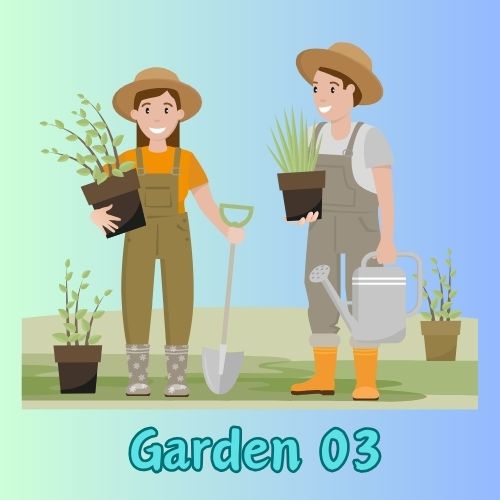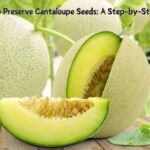Butternut squash, with its nutty flavor and smooth texture, is a favorite in many households. Growing your own butternut squash can be rewarding, and saving the seeds from your harvest allows you to continue the cycle season after season. By learning how to save butternut squash seeds, you can ensure a steady supply of this delicious vegetable in your garden, while also saving money on seed purchases. In this comprehensive guide, Garden 03 will dive into the detailed process of saving butternut squash seeds, from selecting the best squash to storing the seeds for optimal germination.
Why Save Butternut Squash Seeds?
Saving butternut squash seeds has multiple benefits:
- Cost-Effective: Saving seeds reduces the need to purchase seeds every planting season.
- Self-Sustainability: By saving seeds from your best plants, you help your garden become more self-sufficient.
- Preserving Heirloom Varieties: If you’re growing an heirloom or unique variety of butternut squash, saving seeds ensures you can preserve that specific strain.
- Adapting to Your Garden: Seeds saved from your garden become more adapted to your local growing conditions, making them more resilient over time.
What You Need to Know Before Saving Butternut Squash Seeds
Before diving into the process, it’s important to understand a few critical factors about butternut squash and seed saving:
- Cross-Pollination: Butternut squash belongs to the Cucurbitaceae family, which includes pumpkins, zucchinis, and other squash varieties. These plants can cross-pollinate, which means if different varieties are planted nearby, the seeds may not produce true butternut squash. To ensure purity, grow only butternut squash or isolate the plants.
- Choosing Heirloom or Open-Pollinated Varieties: If you want your saved seeds to grow true to the parent plant, you need to save seeds from heirloom or open-pollinated butternut squash. Hybrid varieties (marked as “F1” on seed packets) may not produce consistent results.
- Mature Squash: Only save seeds from fully mature butternut squash. Immature squash will not have viable seeds for planting.
Now, let’s walk through the step-by-step process of saving butternut squash seeds.
Step-by-Step Guide on How to Save Butternut Squash Seeds

Step 1: Selecting the Right Squash for Seeds
The first step in saving butternut squash seeds is selecting the right squash to harvest from. For the best results, choose a healthy, mature butternut squash that:
- Is Fully Ripe: The squash should have a hard outer skin, which is an indicator of full ripeness.
- Is Disease-Free: Make sure the plant and squash are free from diseases or pests to avoid saving infected seeds.
- Grew Well in Your Garden: Select squash from the strongest and most productive plants. This helps propagate plants that are well-suited to your garden’s conditions.
Once you’ve selected the right squash, it’s time to harvest and prepare the seeds.
Step 2: Harvesting and Cleaning the Seeds
Now that you have your mature squash, follow these steps to harvest the seeds:
- Cut Open the Squash: Use a sharp knife to carefully cut the butternut squash in half lengthwise. Be cautious as the skin can be tough.
- Scoop Out the Seeds: Inside the squash, you’ll find a cluster of seeds surrounded by stringy pulp. Use a spoon or your hands to scoop out the seeds and place them in a bowl.
- Separate Seeds from Pulp: Place the seeds and pulp in a bowl of water. The viable seeds will sink to the bottom while the pulp and non-viable seeds will float. Remove the floating material and discard it. Gently rub the seeds to further separate them from any remaining pulp.
- Rinse the Seeds: Once you’ve separated the seeds, rinse them under running water using a fine-mesh sieve to ensure all pulp residue is removed.
Step 3: Fermenting the Seeds (Optional)
Fermentation is an optional step but highly recommended for saving butternut squash seeds. This process mimics what happens naturally when the squash decomposes, breaking down the gelatinous coating around the seeds. It helps reduce seed-borne diseases and increases the chances of successful germination.
- Place Seeds in a Jar: Transfer the cleaned seeds into a jar or bowl and add water, enough to cover the seeds by a few inches.
- Allow to Ferment: Let the seeds sit in the water for 1-3 days, stirring them once or twice daily. You’ll notice bubbles forming on the surface as fermentation occurs.
- Monitor for Mold: A thin layer of mold may form on the surface. This is a natural part of fermentation, but if it becomes excessive, remove the mold.
- Rinse the Seeds Again: After 2-3 days, strain the seeds and rinse them under cool running water. At this point, the seeds should be completely clean and ready for drying.
Step 4: Drying the Seeds
Drying the seeds thoroughly is a crucial step in saving butternut squash seeds. Properly dried seeds are less likely to develop mold or rot during storage.
- Spread the Seeds: Lay the seeds out in a single layer on a clean towel, paper towel, or mesh screen. Make sure the seeds are not touching each other to allow proper airflow.
- Dry in a Cool, Well-Ventilated Area: Place the seeds in a cool, dry place with good air circulation. Avoid direct sunlight, as it can damage the seeds.
- Turn the Seeds Occasionally: Every couple of days, gently turn the seeds to ensure they dry evenly on all sides.
- Dry for 1-2 Weeks: It usually takes about one to two weeks for butternut squash seeds to dry completely. The seeds should feel hard and brittle when fully dried.
Step 5: Storing the Seeds
Proper storage is key to preserving the viability of your butternut squash seeds for future planting seasons.
- Label Your Seeds: Before storing, label your seeds with the type of squash and the date you harvested them. This helps you keep track of your seed inventory and ensures you plant the freshest seeds each year.
- Store in a Cool, Dry Place: Place the seeds in an airtight container, such as a glass jar, plastic bag, or envelope. Store the container in a cool, dry place, like a pantry, refrigerator, or seed storage box. Ideally, the temperature should be around 32°F to 41°F (0°C to 5°C).
- Check for Moisture: To prevent moisture from spoiling the seeds, you can add a silica gel packet or a small amount of rice to the container.
- Monitor Viability: Butternut squash seeds can remain viable for up to 4-6 years if stored properly. However, it’s a good idea to perform a germination test every few years to check the seed quality.
How to Test the Viability of Butternut Squash Seeds
Over time, the viability of seeds may decrease, meaning they’re less likely to germinate. To test the viability of your stored butternut squash seeds, follow this simple method:
- Place Seeds on a Damp Paper Towel: Select 10-20 seeds and place them on a damp paper towel. Fold the towel over the seeds.
- Seal in a Plastic Bag: Place the damp paper towel with the seeds in a plastic bag, leaving it partially open for airflow.
- Store in a Warm Location: Set the bag in a warm spot, like the top of a refrigerator or a windowsill, where the temperature stays around 70°F (21°C).
- Check for Germination: After 7-10 days, check the seeds for germination. Count how many seeds have sprouted and calculate the percentage. If 70-80% of the seeds germinate, your batch is still viable. If fewer seeds sprout, it may be time to save new seeds.
Common Mistakes to Avoid When Saving Butternut Squash Seeds
Even though saving butternut squash seeds is relatively simple, some common mistakes can reduce your success. Here are a few pitfalls to avoid:
- Saving Seeds from Immature Squash: Seeds from under-ripe squash won’t be fully developed, reducing their chances of germination.
- Storing Seeds in Humid Conditions: High humidity can cause seeds to mold or rot. Always store seeds in a dry, airtight container.
- Forgetting to Label Seeds: Labeling ensures you don’t mix up different varieties or plant seeds past their prime.
- Cross-Pollination: If you grow different types of squash too close to each other, cross-pollination can result in hybrid seeds that won’t produce true butternut squash.
Benefits of Saving Butternut Squash Seeds for Your Garden
Saving butternut squash seeds isn’t just about sustainability; it can have a direct impact on the success of your garden. Here’s why:
- Better Adaptation: Over time, seeds saved from your garden become more adapted to your local climate, soil, and growing conditions, resulting in hardier plants.
- Higher Yields: As you save seeds from the strongest plants, you’ll naturally select for higher-yielding squash, increasing your harvest year after year.
- Environmental Benefits: By saving seeds, you reduce the demand for commercial seed production, which can involve heavy pesticide use and monoculture farming practices that harm biodiversity. When you save your own seeds, you’re actively contributing to sustainable gardening practices that benefit both your garden and the environment.
Advanced Tips for Saving Butternut Squash Seeds
For gardeners looking to take their seed-saving skills to the next level, here are some advanced techniques and considerations:
1. Isolating Squash Plants for Pure Seeds
As mentioned earlier, butternut squash can cross-pollinate with other squashes from the Cucurbita moschata species, such as pumpkins or certain other types of squash. If you want to ensure pure seeds, you need to control pollination. Here’s how you can do that:
- Hand Pollination: This technique ensures that your plants don’t accidentally cross-pollinate with nearby squash varieties. Simply use a small paintbrush to transfer pollen from the male flower (the one without a fruit attached) to the female flower (the one with a small fruit at the base). After pollinating, you can tie a small plastic bag around the flower to prevent accidental pollination by bees or other insects.
- Distance Isolation: Another method is to grow your butternut squash away from other squashes, typically at least 1,000 feet apart. However, in home gardens where space is limited, this can be difficult, which makes hand pollination the best solution for purity.
2. Seed Exchange Communities
In many countries, including Vietnam, there’s a growing movement of community-based seed-saving groups that aim to preserve heirloom varieties. You can participate in or start a seed exchange in your local area. Joining these groups allows you to share your saved butternut squash seeds with other gardeners while receiving different varieties in return.
For example, in regions like Đà Lạt, where cooler climates provide ideal growing conditions for a wide variety of vegetables, seed exchanges are increasingly popular. You could save seeds from your butternut squash and exchange them for local seeds such as bitter melon or specialty gourds that are well-adapted to the specific climatic conditions of Vietnam.
3. Optimizing Seed Storage
While storing seeds in a cool, dry place is standard practice, advanced gardeners often go further to ensure maximum longevity for their seeds:
- Vacuum-Sealed Bags: For gardeners with access to vacuum-sealing machines, storing seeds in vacuum-sealed bags can prolong their viability even further by removing air that can introduce moisture.
- Freezing Seeds: If you have a dedicated seed bank or storage area in your home, freezing seeds can keep them viable for decades. Be sure to thoroughly dry the seeds before freezing to avoid moisture damage. Frozen seeds should be thawed slowly at room temperature before planting to ensure they remain viable.
Growing Butternut Squash from Saved Seeds
After successfully saving your butternut squash seeds, the next step is planting them for the next growing season. The planting process is similar whether you’re in a rural farming community or tending a small urban garden on your balcony.
- Starting Indoors: In climates with short growing seasons, such as some parts of northern Vietnam or areas with cooler winters, start your seeds indoors about 4-6 weeks before the last frost date. Use small pots or seed-starting trays, and plant each seed about 1 inch deep in moist, well-draining soil.
- Transplanting Outdoors: Once the seedlings have two sets of true leaves and the danger of frost has passed, transplant them into your garden. Butternut squash thrives in full sun, so choose a sunny spot with well-draining soil.
- Growing in Containers: In more urbanized areas like Hanoi or Ho Chi Minh City, where space is limited, you can grow butternut squash in large containers. Use a container that holds at least 20 liters of soil, and ensure you have a strong trellis or support system for the vines to climb.
- Maintenance and Care: Butternut squash plants need regular watering, especially during flowering and fruiting stages. Mulch around the base of the plants to retain moisture and reduce weeds. Fertilize every 3-4 weeks with a balanced fertilizer to encourage vigorous growth.
By growing butternut squash from your saved seeds, you’ll not only be able to enjoy the fruits of your labor but also pass on these sustainable gardening practices to future generations. Whether you’re part of a rural farming community or an urban gardener, saving seeds connects you to a tradition that spans centuries.





